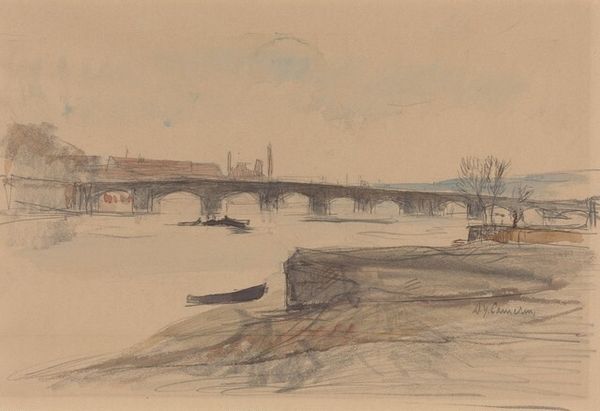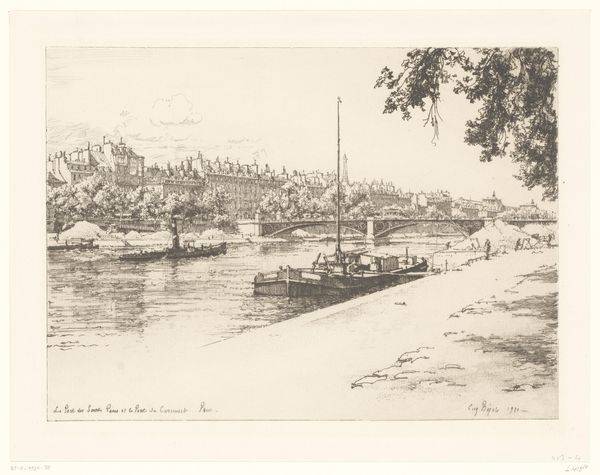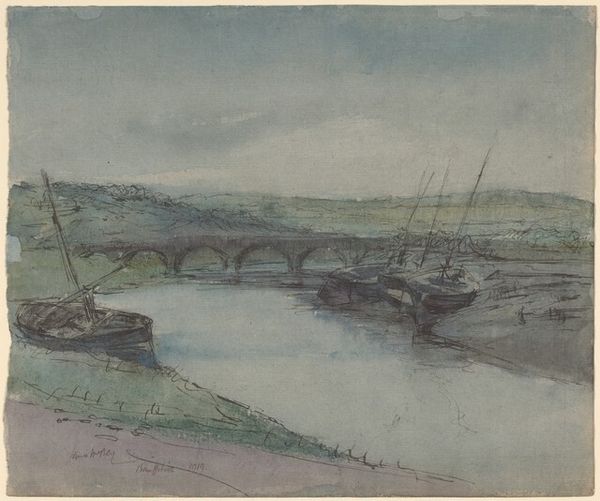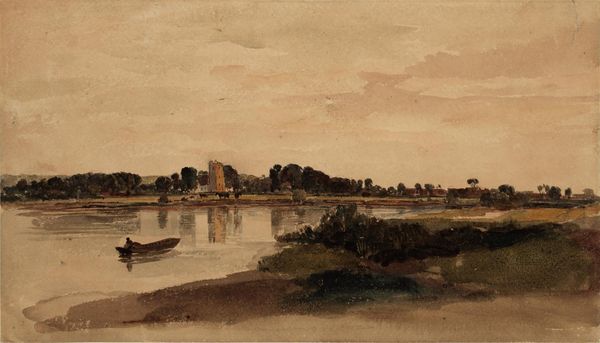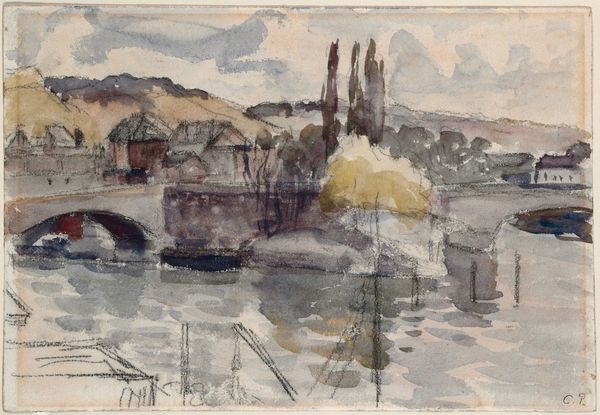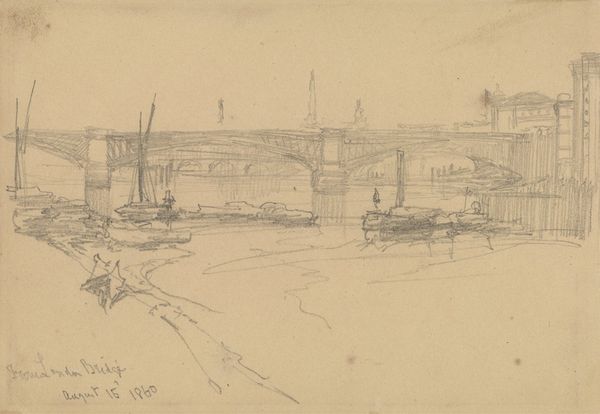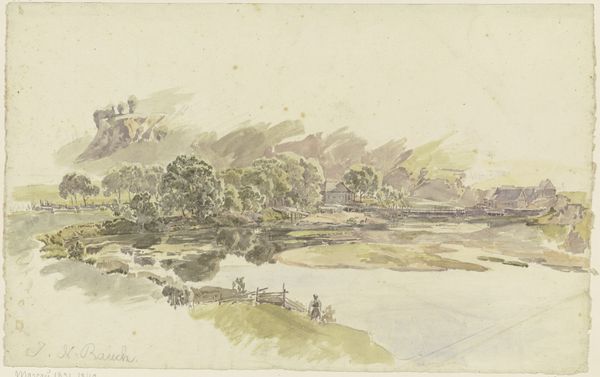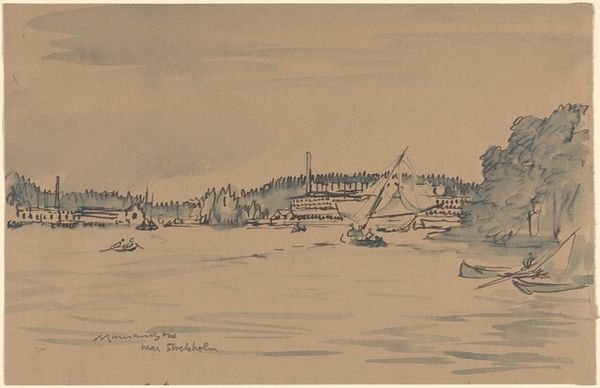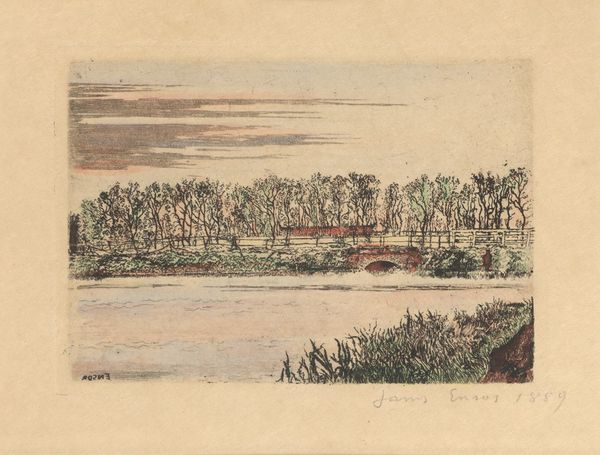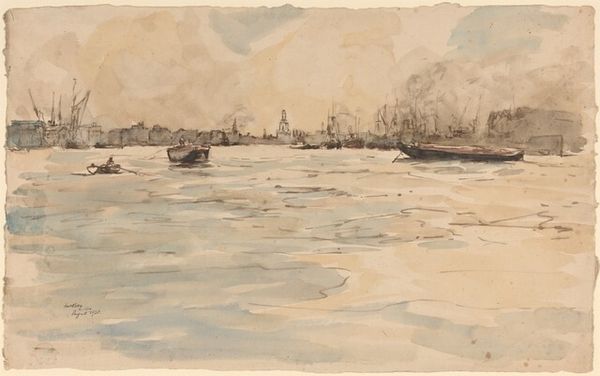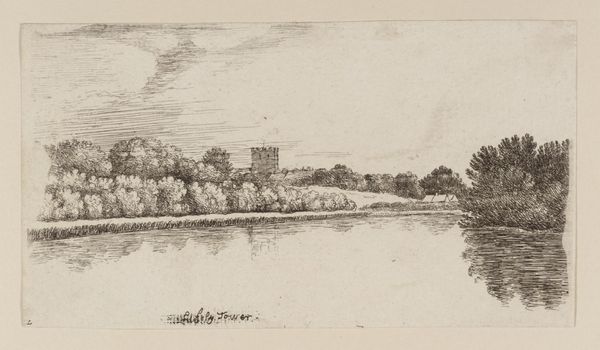
Dimensions: overall (approximate): 22.3 x 27.5 cm (8 3/4 x 10 13/16 in.)
Copyright: National Gallery of Art: CC0 1.0
Editor: Here we have James McBey’s 1919 watercolor drawing, "Snape." The light is gorgeous! What immediately strikes me is its airy, almost unfinished quality. What’s your take on it? Curator: McBey painted this *en plein air*, aligning him with the Impressionists and their desire to capture the fleeting qualities of light and atmosphere. The relatively untouched paper gives it a sense of immediacy, a moment captured in time. Consider the socio-political context: this was painted shortly after World War I. Editor: Interesting, how does the historical context inform the art? Curator: Well, many artists at this time were grappling with the aftermath of the war. Do you notice how this scene avoids overt references to modernity or industrialization? The focus is on the tranquil scene, the traditional sailboats. It almost seems to be a conscious turning away from the conflict and disruption of the period, presenting an idyllic, almost escapist vision of the English countryside. Editor: So, choosing such a traditional scene in the aftermath of such large scale global disruption is not a neutral choice? Curator: Precisely. Landscape, and how we choose to depict it, can serve powerful ideological functions. This piece champions a certain vision of rural England. What kind of public do you think McBey had in mind? Editor: A public yearning for a sense of peace and continuity after so much upheaval, perhaps? I see it now. This landscape isn't just pretty; it's a deliberate statement! Curator: Exactly. The public display of idyllic landscape paintings contributes to the construction of national identity.
Comments
No comments
Be the first to comment and join the conversation on the ultimate creative platform.
